
Farai Mugabe, Content & Research, The HR Congress
WHY SHOULD YOU CARE?
As the world is evolving organizations need to keep up with the changes. It is important to re-align employee performance management systems – as Google has done that –, in order to move from performance management to performance enablement.
A 2015 survey report has indicated that 82% of companies reported that performance evaluations were not worth the time.1 As such companies were making changes to them to their employee performance management systems so as to make them more agile and effective.2 It is over six years since the survey was published and companies are still revamping their employee performance management systems. Google is one of many companies that have decided to revamp its performance management approach as a way to enhance employee productivity and retain critical talent in the face of great resignation.3 The company has introduced a new and revamped employee performance management system called GRAD.4
GRAD is an abbreviation of Googler Reviews and Development. This employee performance model was introduced in May 2022 and is focused on employee development, learning and progression throughout the year. The new system stimulates performance through bundling up HR practices and programs such as employee development, career progression, learning, performance reviews, regular feedback, and promotions.
According to Google, their GRAD performance management is aimed at continued focus on being an employer who provides an environment for employees to build and grow their careers. GRAD is all about how an employee and their manager work on the former’s career and progression. An example of what GRAD looks like is as follows;
- Expectations, feedback, and check-ins
Regular feedback and check-ins will be done throughout the year. This helps employees and managers in aligning work priorities and expectations. One check-in will focus on learning and career development. This shows Google’s commitment to people development and being a great place to work at.
- Promotions
Promotions will occur twice a year at Google under the GRAD system. The company will continue to seek new ways to allow Google employees (also called Googlers) to grow their careers. Google seeks to promote internal talent mobility through its new approach.
- Reviews and ratings
Instead of doing performance ratings twice a year as it used to be the case, Googlers will do them (performance ratings) only once a year. Google believes that its new approach will help its employees to be able to deliver great impact on their everyday working lives.
Having given an account of how the new GRAD system will work, we have done some bit of analysis as to why Google could have done some of the changes it has put in place.
- Bundling of HR practices
When combined together, HR practices can create a powerful impact. This is called HR bundling. 5 Companies can put the following together and create a powerful impact.
- Employee learning and development
- Employee engagement
- Performance reviews and goal setting
- Wellness and life balance
- Regular feedback and check-ins
Google has moved away from traditional performance management which treats performance management as isolated from other HR practices. Combining supporting HR practices such as pay and career progression is aimed at helping Google to provide an environment for employees to build and grow their careers.
- Employee voice taking the centre stage
Employee voice has become critical to managing employees in the great escape.6 Research by McKinsey and Company shows that employees are leaving employment and yet managers do not know why. Given such a scenario, feedback is critical to ensure that a company is able to understand employee needs and act accordingly.7
Employee feedback should not just be about employee engagement. It should also stretch to other HR systems and practices. Remember the employee is the internal customer of people practices such as performance management, industrial relations, recruitment and employee wellness.
Professor Dave Ulrich developed an Organisational Guidance System (OGS) approach that is focused on helping HR teams and companies to create organisations that win in the marketplace. This is aimed at helping companies to introspect their HR systems and be able to optimise people management practices.8
Google said that the company, “… worked with leaders and partners across the company globally to see how we could evolve these processes to help our employees do the best work of their career. We looked at everything, starting with employee feedback, as well as research, industry best practices, and all we’ve learned about how to designed processes for fairness and consistency.”
This is a clear indication on how stakeholder consultation and listening leadership helps to create a sustainable business.
- Data driven decision making
Data driven Human Resource management is an approach to HR decision making that involves the use of making decisions from the foundation of verifiable data. 9 This is a key component of modern day management as it ensures that HR can quantify and measure its efforts and make sound decisions through the use of empirical evidence.10 “We looked at everything, starting with employee feedback, as well as research, industry best practices, and all we’ve learned about how to design processes for fairness and consistency.”, Google said. This is a clear indication that Google took an informed decision before deciding to re-energise its employee performance management practices.
- When you do performance reviews, don’t just talk about action items
Reviews are usually centred on what has been done and what has not been done. Companies often ignore other key issues that affect performance take the centre stage. During a webinar by the HR Congress entitled, RISE! How Human Resources Can Lead the Organisation Through The Current Humanitarian Crises And Beyond, Heike indicated that we need to think about our people who have gone through so many tough times.11 She said that most of the time in business meetings, people are so worried about hard results that they forget about delicate people issues that matter.
There has been the rise of caring leadership. Employees want to work with leaders who are compassionate and caring about employees’ life beyond work. A manager should not just talk about work issues all the time. They should show concern on the employee’s life. A time to just sit and discuss about life issues can create a powerful memorable impact in an employee’s life. Other questions to ask include but not limited to the following: How is the family? Have you managed to build the house you wanted to build? How can we help you achieve that goal of building your house? What are your career goals? Companies that help employees to achieve company goals whilst pursuing their own (employees) personal goals are able to drive positive employee engagement and experience.
- Check ins becoming more central to Google
Google indicated that Regular feedback and check-ins will be done throughout the year. This helps employees and managers in aligning work priorities and expectations. One check-in will focus on learning and career development. This shows Google’s commitment to people development and being a great place to work at.
In the year 2012, Adobe famously abolished performance ratings and introduced regular and informal check-ins. The Adobe model has been appreciated and replicated across the industry since then.12 Companies either replicated Adobe’s model or improved it in line with their context. It is no surprise that Google has also incorporated regular check in its facelifted performance management system.
- Google not letting go performance ratings
Whilst other companies are removing ratings Google is still using performance ratings. The reason is on the power of measurement. Peter Drucker an HR luminary once said, “What gets measured gets done.” There is value and power in measurement. By being able to measure performance using ratings, Google is able to monitor and track performance quantitatively.
- One review per year
Instead of doing performance ratings twice a year as it used to be the case, Googlers will do them (performance ratings) only once a year. Google believes that its new approach will help its employees to be able to deliver great impact on their everyday working lives. The reason behind this could be that reviews are sometimes flawed. Employees hate reviews because they are often less objectives. To probably make reviews more objectives, Google decided to do them once.
- Creating an encouraging rating scale
According to Google, “The two ratings below the middle are “Moderate Impact” and “Not enough Impact” and the two above are “Outstanding Impact” and “Transformative Impact” for those who perform above or below that high standard.”
This is key as well. Human centred HR. Words such as poor performance, weak performance, bad performance negatively affects employee confidence levels and ability to come back after a review.
It’s thus critical to have more humane and encouraging ratings. Instead of poor Performance, go for not enough impact as what Google has done.
Google has chosen to use encouraging and powerful words such as outstanding, impact and transformative. The company has chosen an impact driven performance management system where it seeks to focus on impact rather than just effort. Steve Jobs once said, “Customers don’t measure you by how hard you have tried, they measure you by the results.” It is the results that matter at the end of the day.13
The world has evolved and continues to do so. Most performance management systems have not changed.14 In order to move from performance management to performance enablement, it is important to re-align employee performance management systems as what Google has done. Do not forget to register for an online webinar on performance management 15 that is being hosted by The HR Congress.16The keynote speaker of the event is Professor Alan Colquitt who is a thought leader in employee performance management.
…
1Performance Management: Playing with a winning hand. 2017 Global Human Capital Trends, by Nathan Sloan, Stacia Garr and Karen Pastakia
2How performance management is killing performance: The 8 fatal flaws of performance management, by Mihaly Nagy, HR Congress
https://hr-congress.com/2022/05/03/the-8-fatal-flaws-of-performance-management/
3Leading @Work- Reimagining Leading and Coaching for results, by Mihaly Nagy, HR Congress
https://hr-congress.com/2022/04/03/leadingwork-reimagining-leadership-and-coaching-for-results/
4Googler Reviews and Development, by Google, Google
https://buildyourfuture.withgoogle.com/resources/grad/
5Strategic Human Resource Management: Back to the future? A literature review, by Michael Armstrong and Duncan Brown, Institute of Employment Studies,
5Employee engagement in the new world of work, by Farai Mugabe, HR Congress
https://hr-congress.com/2022/03/25/employee-engagement-in-the-new-world-of-work/
6‘Great Attrition’ or ‘Great Attraction’? The choice is yours, by Aaron De Smet, Bonnie Dowling, Marino Mugaya-Baldocchi and Bill Schaninger
7Establishing an Organisation Guidance System, by Dave Ulrich, Norm Smallwood and Alan Todd, RBL Group
https://www.rbl.net/insights/articles/establishing-an-organization-guidance-system
8Global Business Driven HR Transformation: The Journey Continues, by Jason Geller and Arthur Mazor
The inconvenient truth about HR OD People Analytics | Alec Levenson
9The inconvenient truth about HR OD and People Analytics, by Alec Levenson and Mihaly Nagy, HR Congress
https://www.youtube.com/watch?v=3AHVhTeM5q4
10 RISE! How Human Resources Can Lead the Organization Through The Current Humanitarian Crisis And Beyond, by Mihaly Nagy
11 How Adobe continues to inspire great performance and support career growth, by Adobe
https://www.adobe.com/checkin/
12Customers don’t measure you by how hard you have tried. They measure you on how you deliver, by Steve Jobs, Quotefancy
13Reimagining performance management in an evolved world of work, by Farai Mugabe, HR Congress
https://hr-congress.com/2022/04/14/reimagining-performance-management-in-an-evolved-world-of-work/
14Performance at work. From performance management to performance enablement, by HR Congress
Written by: Mihaly Nagy
Employee Engagement Employee Experience Future of Work HR Strategy Talent Management
Previous post

- 3731
labelArticles today2022.05.09.
HR’s Greatest Contribution
By David C Forman, bestselling author “Fearless Talent Choices” WHY SHOULD YOU CARE? The opportunity for HR to provide strategic value is greater than ever before. The times demand it [...]
Similar posts

- 5118
- 17

- 5003
- 7
labelNews today2022.07.07.









Post comments (0)